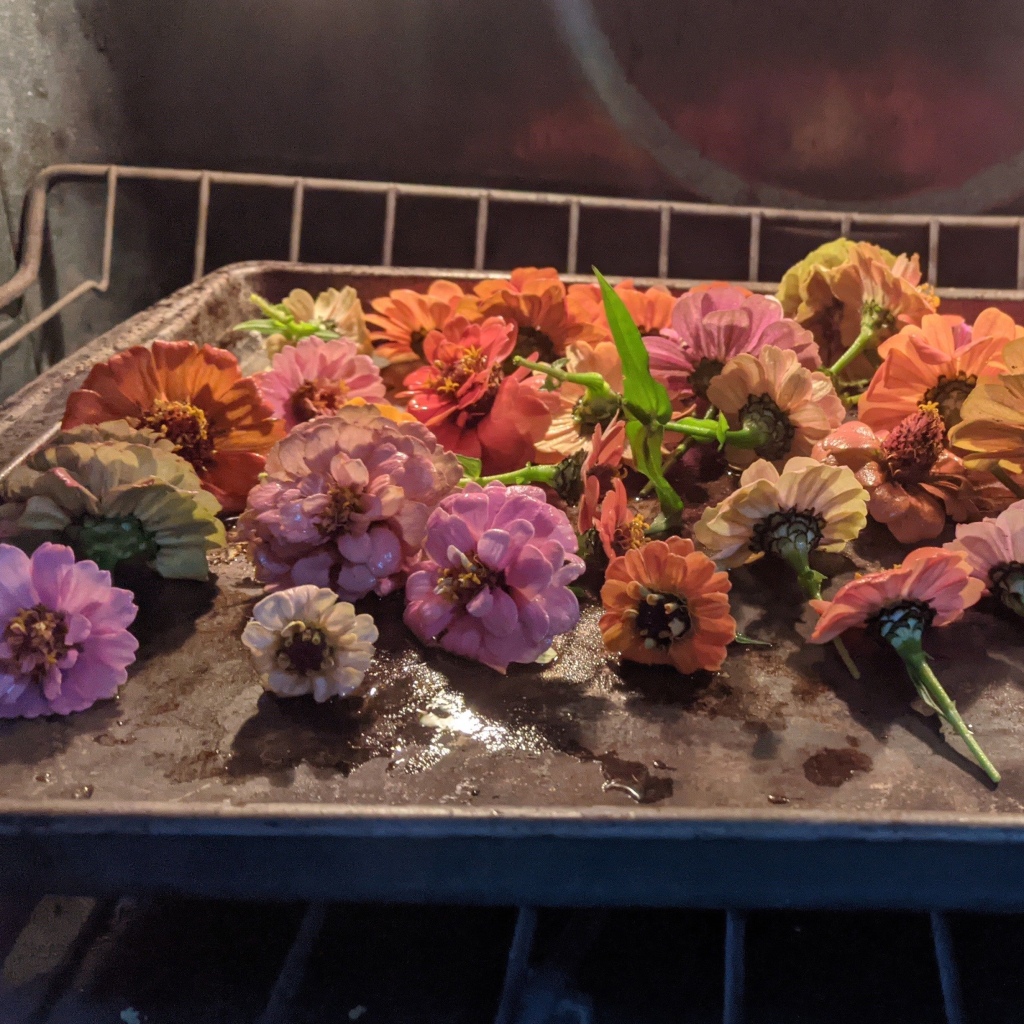Self care is so important. One of my favorite methods of self care is making my own flower infused oil for my moisturizers. I enjoy using coconut oil, jojoba oil, or sweet almond oil to make this concoction. In this post I’ll be infusing coconut oil with Zinnias, but you can use whatever flower and oil you have at hand. Remember to use flowers and ingredients that are organic and healthy for your skin, body, and soul. Beware of using plants and ingredients with pesticides or unknown chemicals.

While working on a community garden, I was given a plethora of Zinnias for my trouble. Zinnias, I found, are not only edible but they are a great flower to use in tinctures and other medicines as they may improve cholesterol levels and have anti-fungal properties. These plants are also great soil cleaners, and can be planted to remove toxicity from the soil.
Along with all the positive health benefits and attraction of humming birds and beneficial insects, these flowers are absolutely beautiful. I’ve really enjoyed working with them.

To begin, I took all of the Zinnias and cut the flowers off the stems, leaving only an inch or less of stem. Then, I dried the Zinnias in an oven at the lowest setting possible for about twenty minutes. The lower the heat the better, as the higher the heat the more terpenes get burnt off. Terpenes are kind of like the essential oils of the plants.

After I dried the flowers in the oven at a very low heat, I melted whatever was left in my coconut oil jar. I used a small metal pot, but really you can use whatever pot or deep pan you have on hand. After the coconut oil melted, I put the Zinnias in it and let it sit on the lowest heat possible for about two hours. You can leave it as long or little as you’d like. There’s no rhyme or reason as to why I chose two hours, it just seemed like the right amount of time.
Then I grabbed one of my small glass jars and put a funnel on top. After pouring the liquid in the small glass jar I squeezed the flowers to continue pressing more of the oil into the jar.

This little glass jar will last a while, and if kept in cool conditions can last even longer. I will use this particular concoction as body butter, face moisturizer, and hair cream.
To use this as a body butter I’ll use a more generous amount and massage it into my skin. The warmth of my hands will melt the coconut oil if it has solidified.
To use this as a facial cream I’ll take a very small amount, just touch it slightly with my index and middle finger, and apply that to my face. I don’t use more than that as coconut oil is very rich and too much makes me break out.
To use as a hair moisturizer I use a small dab about the size of my index finger’s tip. I don’t need much at all, and I have long hair.
Post a comment and let me know: do you like playing with your self care goop and making your own measurements, or do you like carefully built recipes? What’s your favorite method of self care?



